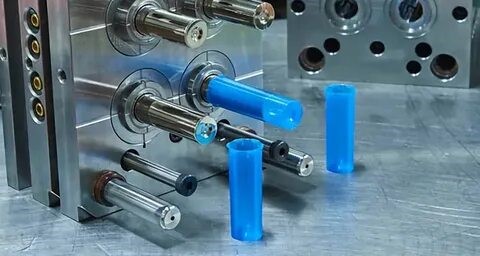In today's highly competitive market, speed to market can determine whether a product succeeds or fails. For businesses looking to reduce development cycles without sacrificing quality or cost, rapid injection molding has become a game-changing technology. This cutting-edge manufacturing method produces plastic components in days rather than weeks or months by using customized aluminum tooling and efficient production procedures. Rapid injection molding prioritizes agility and iteration capabilities while still creating production-grade components fit for market testing or even complete production runs, in contrast to traditional injection molding, which usually needs extensive lead times for the manufacturing of steel molds.

Simplified Design-to-Manufacturing Transition
Many of the delays seen in conventional production workflows are eliminated by rapid injection molding. Without requiring lengthy engineering evaluations or adjustments, digital designs may proceed straight to tooling fabrication. While specialist manufacturing teams experienced with quick-turn projects can recommend small changes that maintain design intent while enhancing moldability, modern design for manufacturing (DFM) software automatically detects any problems prior to production. When compared to traditional approaches, this expedited procedure can save development time by 50–70%.
Accelerated Prototyping with Production-Grade Materials
Rapid injection molding employs the real production-grade resins meant for the finished product, as contrasted to 3D printing, which frequently uses other materials. This feature enables engineers and designers to test prototypes with authentic material qualities, such as strength, flexibility, and thermal performance, in real-world settings. Development durations are further shortened by the ability to evaluate performance using real materials, which removes the requirement for several testing cycles using various production techniques.
Reduced Tooling Lead Times
Rapid injection molding uses aluminum tooling that can be machined in days instead of weeks, which may not last as long as steel for high-volume production but is ideal for initial production runs of thousands or tens of thousands of parts. When time sensitivity outweighs concerns about longevity, this method produces dramatic schedule improvements without sacrificing quality. Traditional steel molds can take 8–12 weeks to produce, which creates a significant bottleneck in product development.
Iterative Design Flexibility
Rapid tooling's speed and affordability allow for a more iterative approach to product development. Multiple iterations of a portion may be tested, adjustments can be made based on real-world testing, and changes can be swiftly implemented with little effect on the timeline. With this flexibility, the conventional linear development process is changed into a more flexible, responsive strategy that can react to technology advancements or market input without causing launch schedule delays.
Seamless Bridge to Full Production
Rapid injection molding facilitates a seamless transition to full-scale manufacturing when it is designed appropriately. In order to enable businesses to start selling goods while final production tooling is being created, several manufacturers provide "bridge tooling" services. By using this strategy, businesses may start recovering development expenditures earlier in the product life cycle and reduce time-to-revenue. After market validation is obtained, switching to high-volume production tools is no longer a bold move but rather a natural progression.
Final Words
Rapid injection molding offers firms a significant competitive edge if they want to shorten development times without compromising quality. Businesses may launch goods more quickly and confidently due to this technology, which removes conventional bottlenecks and makes it possible for a more iterative, market-responsive development process. Many businesses employ CNC production with fast injection molding to develop full product assemblies that combine the benefits of both technologies for even more manufacturing flexibility.
FAQs
What kinds of materials are suitable for rapid injection molding?
The majority of thermoplastics, such as ABS, TPE, nylon, polycarbonate, and polypropylene, function effectively. However, the requirements of your particular application will largely determine the material you choose.
With quick tooling, how many parts can be produced?
Usually, aluminum tooling can handle 2,000–10,000 parts, although certain well-made molds may make a lot more before they start to wear down and need to be replaced.
What is the ideal component size for quick injection molding?
Small to medium-sized pieces (less than 12 inches) work well; however, multi-cavity molds or component assembly can handle bigger parts.
Ready to accelerate your product development? Partner with UTT Mould for expert rapid injection molding services in China.